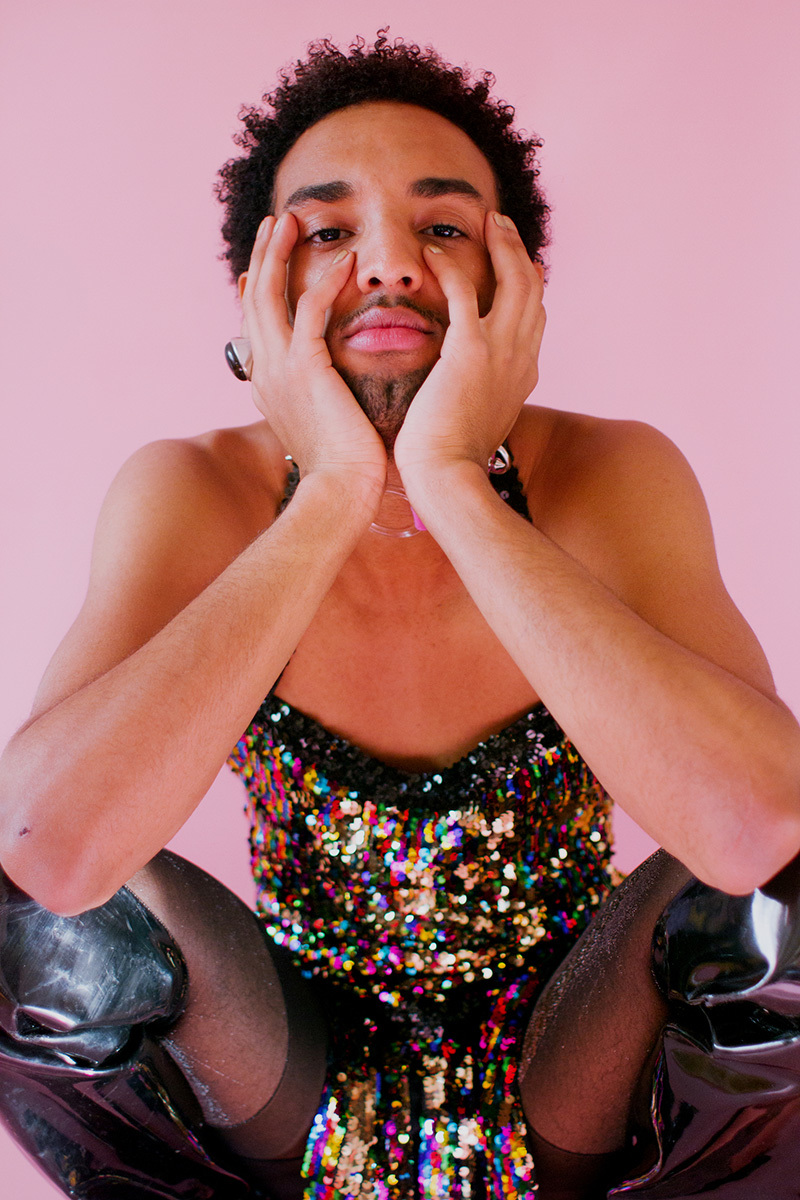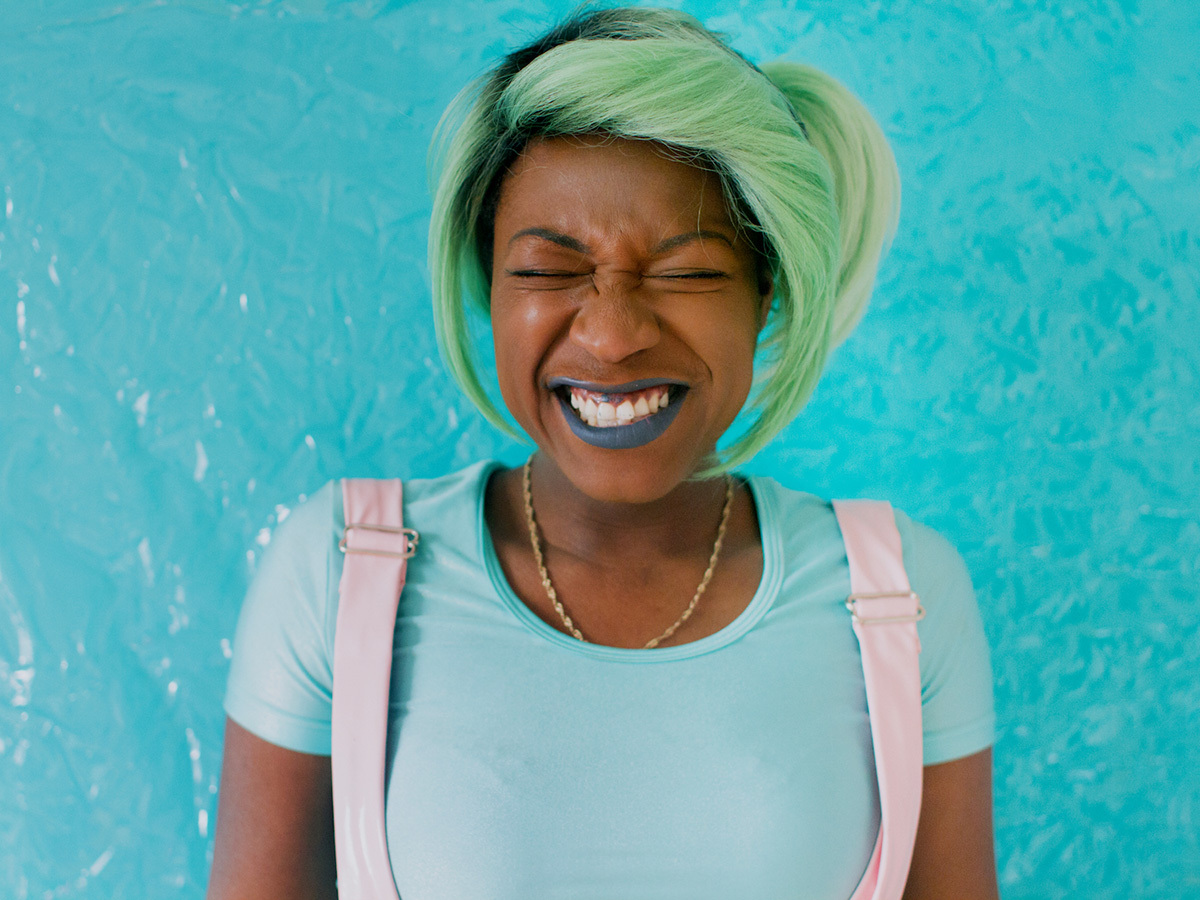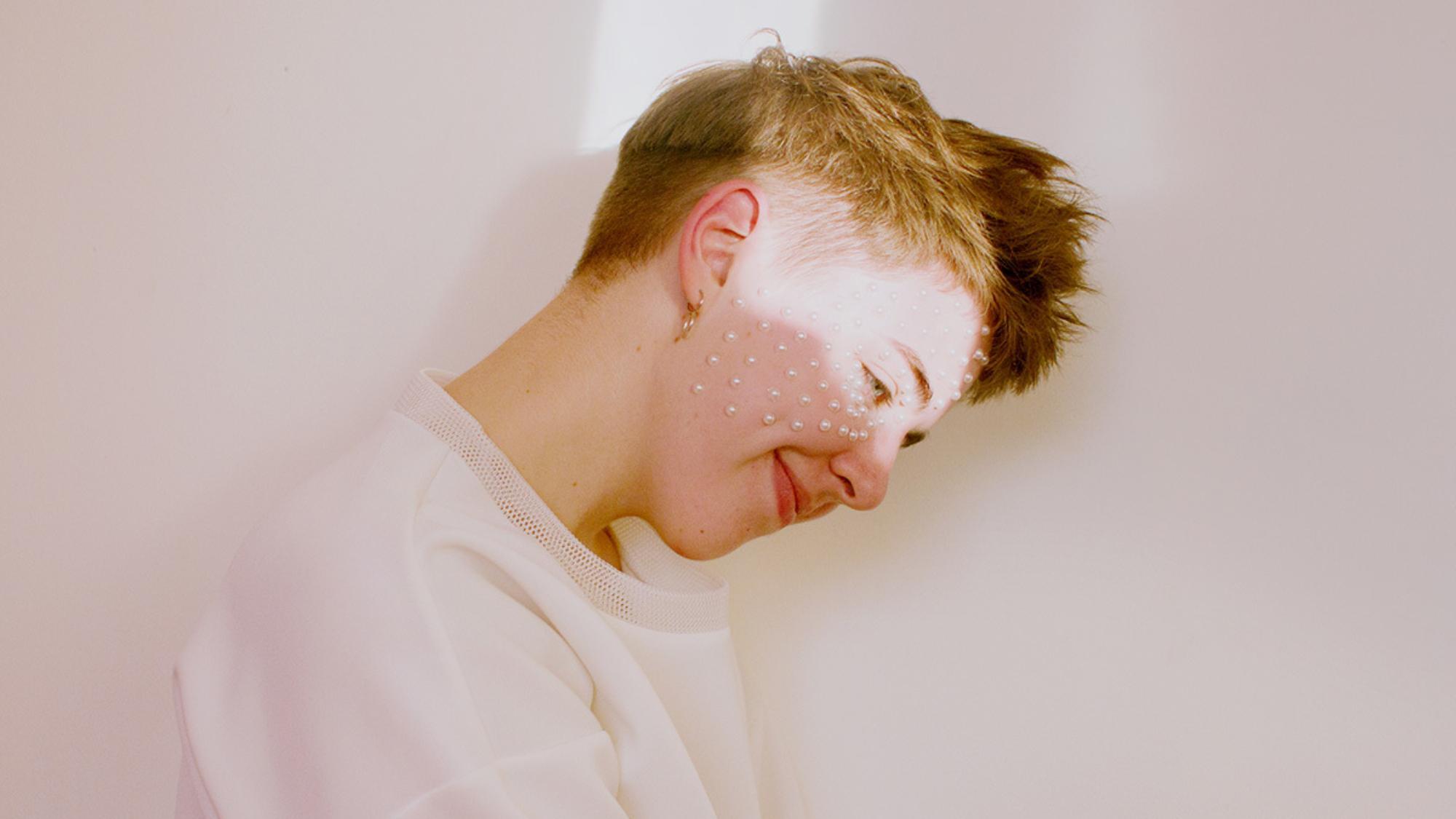Coming from a creative family, art has always been in Laurence Philomène‘s blood. But it wasn’t long before the 23-year-old found herself at odds with her very straight French-Canadian surroundings. As a non-binary queer person, Laurence didn’t really feel like she fit in. These feelings of uneasiness were exacerbated by bouts of chronic illness she experienced growing up. It was through making art, however, that Laurence was finally able to come to terms with herself and embrace her identity. After taking a couple of photos of her Blythe doll collections, and posting them on Flickr to a rave response, Laurence soon turned the camera on herself and her community of non-binary friends.
Mentored by Condé Nast’s corporate photography director, Ivan Shaw, in 2012, Laurence helped set up The Coven, a feminist art collective dedicated to showcasing the work of emerging female and non-binary artists. Working around themes of gender identity, her colorful portraits celebrate the diverse narratives that are often underrepresented in mainstream trans discourse. Fresh from the launch of her latest exhibition, Non-Binary Portraits, in association with Curated by GIRLS, we caught up with the artist to talk gender, representation, and identity.

How has your background shaped you as a person?
I grew up in a really artistic family. My dad is a screen print artist and we collaborate a lot, so I think in that sense I always grew up feeling free to make the art that I wanted to make — which was wonderful. This is a tough question for me to answer because I grew up in a very straight French Canadian environment and I feel like at some point I decided to separate myself from that because I couldn’t fully be myself as a non-binary queer person in that environment, so, I don’t know how much it has shaped me really.
What were your greatest challenges as a young person?
I suffered from several chronic illnesses throughout my entire childhood. That’s not something that people necessarily know because for the first time in my life my health is pretty stable right now, but the experience of being sick every day for over two decades has definitely shaped who I am as a person a lot. I spent a lot of time alone, a lot of time at the hospital, and I definitely had to find creative ways to entertain myself and express myself. I think my greatest challenge has been to not become bitter. I also have ADHD and paranoia so I feel like growing up I was, and still am, in my head a lot.
How did you overcome these challenges?
With a strong will to survive I guess. I also had to learn how to be gentle with myself. That’s still a process.

When did you first get into art?
I always loved making art growing up but my turning point was definitely when I started collecting Blythe dolls and photographing them — I’d put the photos on Flickr and I started getting good feedback on my images so it encouraged me to keep going, and eventually I started taking photos of myself and of my friends. I met a community of fellow young photographers on Flickr and we all bonded and helped each other grow; I would say that’s definitely shaped my photographic practice a lot.
How has your understanding of gender and identity changed over the years?
This is a huge question. I think mostly my understanding of gender and identity regarding myself has changed over the years. There’s a lot of things that didn’t make sense to me about who I was, how I should exist in the world, that started to make so much more sense when I came to terms with my own identity as non-binary.
Can you tell us a bit about Non-Binary Portraits?
It’s an ongoing series where I photograph my friends who are non-binary (encompassing a lot of different trans identities that don’t necessarily fit within the strict binary of man/woman) the way they’d like to be represented — the project is meant to be a collaboration between me and the models, asking them how they’d like to be photographed. The aim of this project is to celebrate narratives that are often underrepresented in mainstream trans discourse and to give more agency to trans subjects.

What prompted the project?
My desire to collaborate with my friends, to make work the kind of work that I want to see being made. I wanted to shift my photographic practice to something that’s more honest about who I am, who the people I love are, and to give more agency to my subjects.
What do you hope viewers take away from the project?
The project isn’t meant to educate anyone really — I made it for myself and for my friends. But like I said, if anyone can feel included and validated because of it, that’s all I can ask for.
Why is this project so personal to you?
I always cast my friends and the people I love in my projects, but this one was really special to me because I got to listen to them and see how they saw themselves and how they interpreted their own gender and that was a wonderful thing. Obviously as a non-binary person myself it’s also something that’s close to my heart.

If you could change one thing in the world what would it be and why?
There are too many things! Sorry if that seems like a cop out answer, but there is so much. Our world is pretty messed for most people right now. I think white supremacy is at the root of a lot of it. One thing I’d change first is: interview me less and interview artists of color more.
What are your hopes for the future?
For everyone I love to feel safe.
Non-Binary Portraits is showing at Berlin’s coGalleries from May 19-31.
Credits
Text Tish Weinstock
